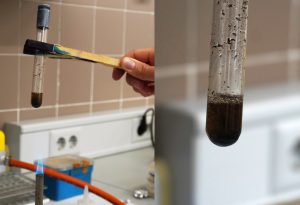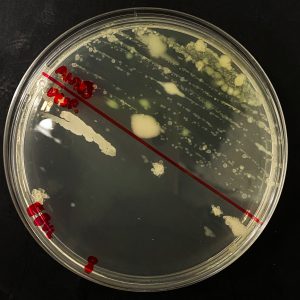Boiling
Boiling is not a sterilization procedure. Only temperatures of 100ºC can be reached with this physical procedure, which is not enough to eliminate resistant life forms such as the endospores. But this procedure does enable us to eliminate vegetative life forms, especially pathogens, thus reducing the microbial load significantly.
To carry out this practical a test tube is used with a mixed culture that must contain at least one bacterial species of the Bacillus genus.
We inoculate 100 microliters of the mixed culture in a nutrient agar plate. This will be our control that we will use for comparison.
The test tube must be picked up with wooden tongs; Light the Bunsen burner and then put it in the flame. Make sure that the liquid does not overflow when it boils or that the stopper does not fly out of the tube due to the gases that are produced.
The liquid in the test tube must be boiled at least three times. Then it must be left to cool and a volume of 100 microliters is inoculated in another nutrient agar plate.
After incubating the two plates at 37ºC for 24 hours, we observe that the plate with the inoculum that has not been boiled has a large and diverse number of colonies. If the microbial concentration is very high a bacterial lawn might even be seen. Whereas, in the plate with the inoculum that has been boiled only a few colonies, which are all very similar to each other, should be observed.
Educational Innovation Activities Assistance- Vice Rector for Academic Affairs/Enquiries and technical matters – Tel: 96 522 2059 – ”

